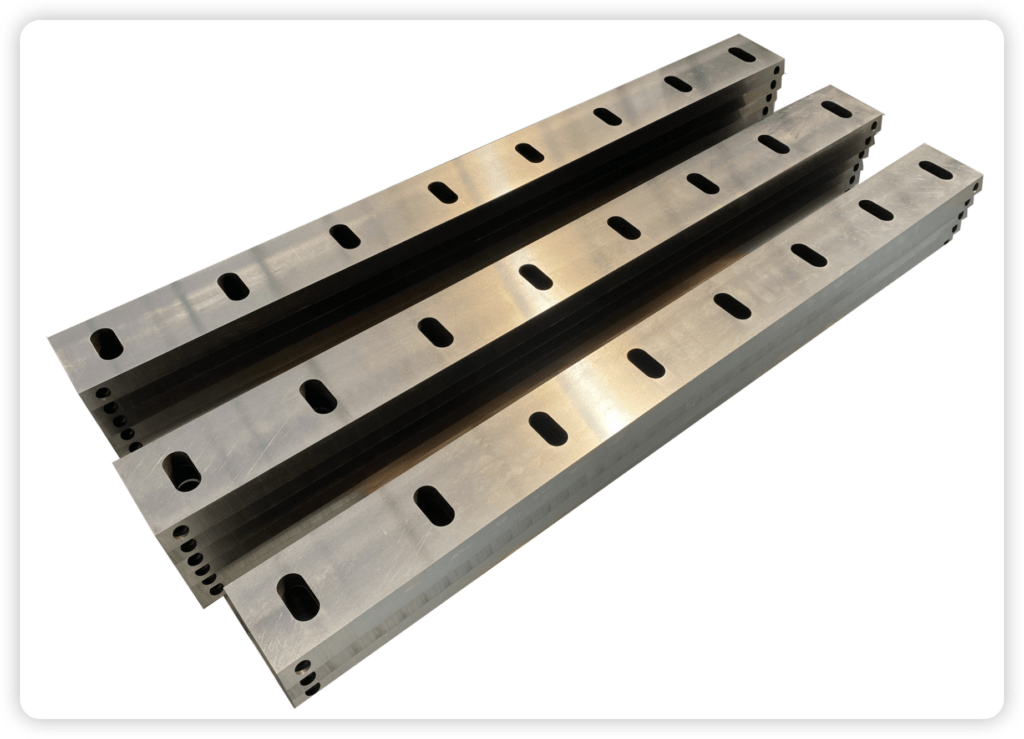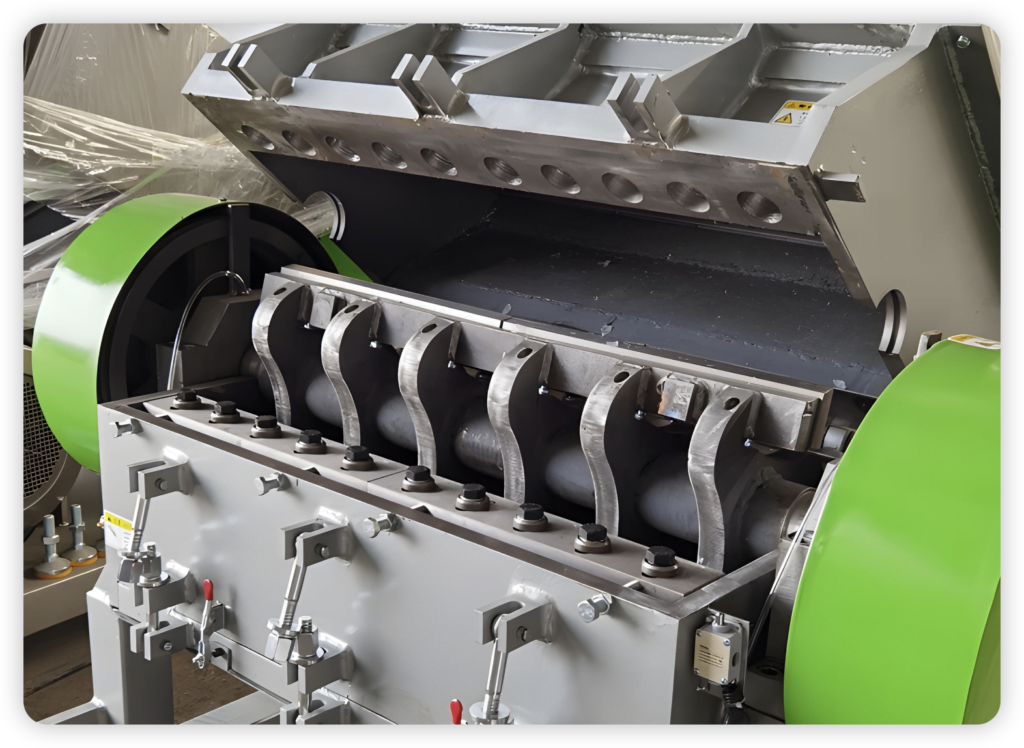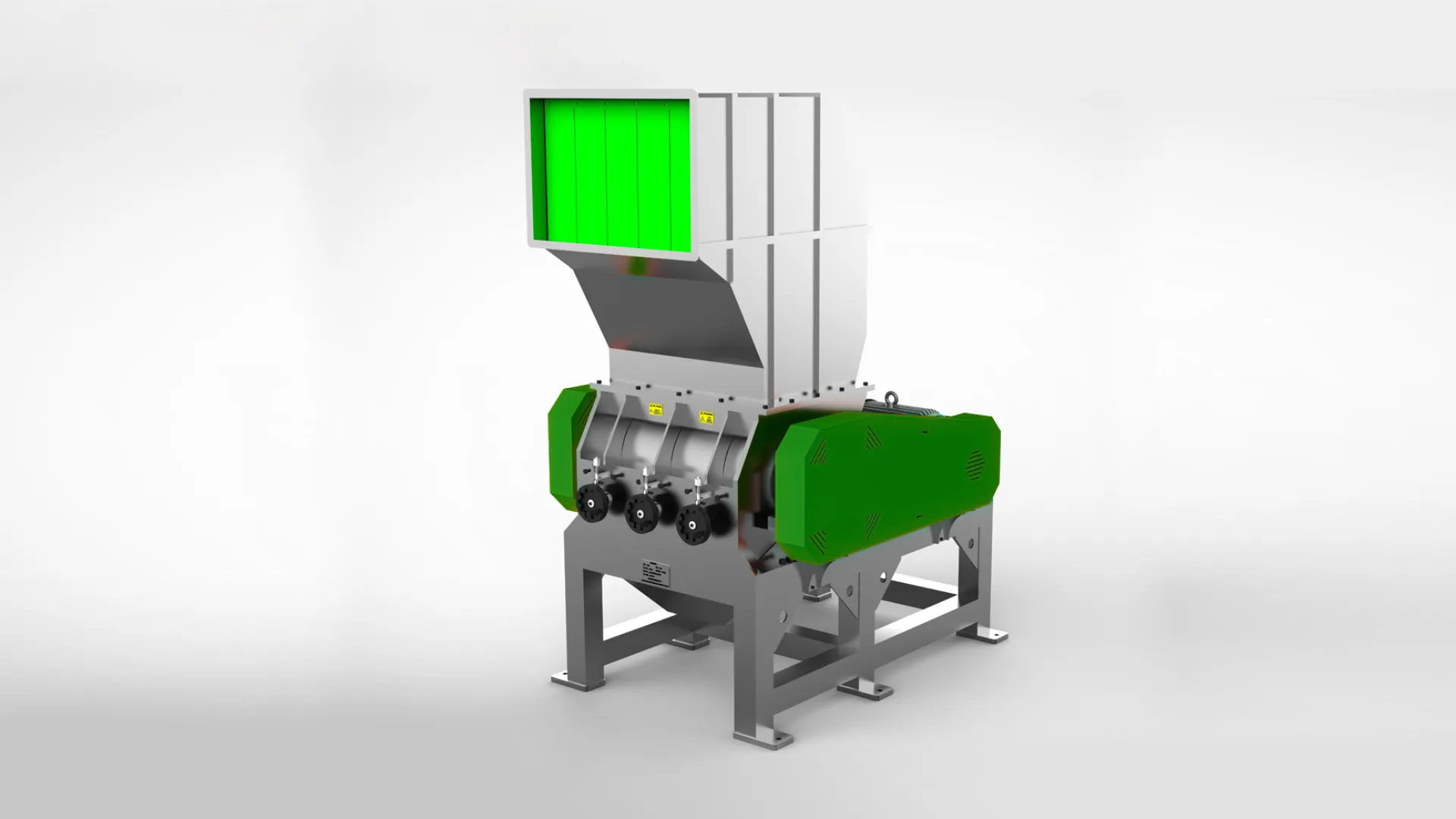Пластични гранулатори су заиста незаменљиве машине у екосистему рециклаже пластике. Они играју кључну улогу у трансформацији различитих облика пластичног отпада – од флаша и контејнера до већих индустријских остатака – у вредне, материјале за вишекратну употребу познате као „регруде“ или „љуспице“. Ови прерађени материјали се затим могу поново увести у производњу, значајно смањујући потребу за необрађеном пластиком и доприносећи одрживијој будућности. Овај чланак нуди свеобухватан водич за... Пластични гранулатор технологију, удубљујући се у њихове принципе рада, различите типове, кључне факторе који утичу на брзину њихове гранулације, специфичности влажне гранулације и битне савете о правилној употреби и одржавању. Наш циљ је да вам пружимо јасно разумевање ових виталних машина.
Како функционишу пластични гранулатори
У њиховој суштини, Пластични гранулатор Јединице раде на једноставном, али изузетно ефикасном принципу. Замислите сет оштрих ножева за сечење сигурно монтираних на ротор велике брзине, који се брзо окрећу унутар чврсте коморе за сечење. Ова комора такође садржи стационарне ножеве. Како се пластични отпад убацује у гранулатор (обично кроз левак), динамичка интеракција између ротирајућих и стационарних ножева ефикасно уситњава, сецка и сече пластику на све мање комаде. У основи коморе за сечење налази се сито прецизне величине. Када се честице пластике довољно смање да прођу кроз отворе сита, оне се испуштају као једнообразни рециклирани материјал или љуспице, спремне за следећу фазу рециклаже или поновне обраде. Већи комади остају у комори, настављајући да се секу док не испуне захтеве за величину.
Врсте пластичних гранулатора
Иако је основни концепт сечења доследан у већини Пластични гранулатор Модели, различити дизајни су еволуирали како би задовољили специфичне материјале, захтеве пропусности и оперативне услове. Три основна типа на која ћете се најчешће срести су:
- Двоструки рез маказама (или двоструки угаони рез): Овај софистицирани дизајн карактеришу ротор и стационарни ножеви који су паралелни, али благо нагнути, стварајући право сечење налик маказама. Ова прецизна конфигурација обезбеђује конзистентан размак сечења дуж целе дужине ножева. Предности су бројне: смањено загревање током рада, минимизирана потрошња енергије, чистији и равномернији резови са мање ситних честица (честица сличних прашини) и често нижа радна бука.
- Шеврон или V-тип ротора: У овом популарном дизајну, ножеви ротора су распоређени у карактеристичном „V“ или шевронском облику. Ова интелигентна конфигурација континуирано повлачи пластични материјал ка центру ротора, чак и када ножеви почињу да се тупе. Ово чини V-тип ротора посебно ефикасним за ефикасну обраду дебљих или робуснијих пластичних компоненти и шупљих предмета, јер спречава да се материјал „јаше“ по ножевима.
- Спирални ротор (или степенасти ротор): Са ножевима распоређеним у спиралном или степенастом облику око затвореног или полузатвореног ротора, овај тип је пројектован за издржљивост. Степенасти рез распоређује силу сечења, што га чини изузетно робусним и погодним за обраду посебно дебелих, густих или пластичних делова са великим попречним пресеком. Често се бирају за примене које захтевају висок проток захтевних материјала.

Фактори који утичу на брзину и ефикасност пластичног гранулатора
Неколико међусобно повезаних фактора значајно утиче на брзину, пропусност и укупну ефикасност којом Пластични гранулатор може да обрађује пластични отпад:
- Врста материјала: Инхерентна својства пластике која се обрађује су од највеће важности. Мекше, савитљивије пластике попут полиетилена (PE) и полипропилена (PP) се генерално лакше и брже секу. Насупрот томе, чвршће, круће инжењерске пластике попут акрилонитрил бутадиен стирена (ABS), најлона (полиамида – PA) и поликарбоната (PC) захтевају већу силу сечења и могу се спорије обрађивати. Ломљиве пластике могу се распасти, стварајући више ситних честица, док еластомерни материјали могу бити тешки за хватање и чисто сечење.
- Величина и дизајн коморе за сечење и ножева: Већа комора за сечење може да прими већу количину пластике у било ком тренутку. Слично томе, дужи ножеви нуде већу површину сечења. Укупна геометрија коморе и положај ножа такође играју кључну улогу у начину на који материјал тече и доспева до ивица за сечење.
- Квалитет и материјал ножева: Ово се не може довољно нагласити. Висококвалитетни ножеви, обично израђени од издржљивих, отпорних на хабање алатних челика попут D2 / SKD11, су апсолутно неопходни за ефикасно, конзистентно сечење и продужени век трајања. Оштри, добро одржавани ножеви захтевају мање енергије и производе бољи квалитет брушења.
- Количина ножева (ротор и статор): Генерално, повећани број ножева (и на ротору и на стационарним ножевима) доводи до више резова по обртају, што доводи до брже гранулације и потенцијално финијег млевења. Међутим, оптималан број је специфичан за Пластични гранулатор дизајн и материјал који се обрађује; превише ножева понекад може довести до блокада код одређених материјала.
- Снага електромотора: Снажнији електромотор обезбеђује већи обртни момент, омогућавајући ротору да се брже окреће и одржава брзину чак и под великим оптерећењем. Ово директно утиче на процес сечења и способност машине да обрађује тврђе материјале или веће брзине померања.
- Величина екрана (пречник отвора бленде): Величина отвора на ситу за избацивање диктира коначну величину млевеног материјала. Мањи отвори на ситу производе финији млевени материјал, што може бити неопходно за одређене примене, али то такође значи да материјал дуже остаје у комори за сечење, смањујући укупни проток. Насупрот томе, већи отвори на ситу омогућавају бржу обраду, али резултирају крупнијим честицама.

Мокри пластични гранулатори
Мокро Пластични гранулатор Модели, као што и само име сугерише, интегришу систем за директно увођење воде у комору за сечење током рада, обично путем стратешки постављених водених млазница или црева. Овај наизглед једноставан додатак нуди неколико значајних предности:
- Делимично чишћење: Текућа вода помаже у испирању површинских загађивача, као што су прљавштина, песак и папирне етикете, са пластике док се она смањује. Ово може бити посебно корисно као корак претходног чишћења у већој линији за прање.
- Подмазивање и хлађење: Вода делује као ефикасно мазиво између ивица ножева, смањујући трење. Ово, заузврат, минимизира накупљање топлоте унутар коморе за сечење, што је кључно при обради пластике осетљиве на топлоту која би се у супротном могла истопити или деградирати.
- Смањено хабање ножа и сузбијање прашине: Комбинација подмазивања и хлађења значајно смањује брзину хабања ножева, продужавајући њихов радни век и смањујући учесталост одржавања. Поред тога, вода помаже у сузбијању честица прашине у ваздуху, стварајући чистије и безбедније радно окружење.
Због ових предности, мокро Пластични гранулатор Јединице се обично користе у интегрисаним линијама за прање пластичних фолија и крутих пластичних материјала, где се чишћење и смањење величине одвијају истовремено.
Правилна употреба пластичног гранулатора: Најбоље праксе за безбедност и ефикасност
Да бисте осигурали безбедан, ефикасан и дуготрајан рад вашег Пластични гранулатор, придржавање најбољих пракси је неопходно. Размотрите ове кључне смернице:
- Преоперативне провере: Увек се уверите да је комора за сечење празна пре покретања гранулатора. Укључите гранулатор *пре* убацивања било ког пластичног материјала, омогућавајући му да достигне пуну брзину.
- Контролисано храњење: Уносите материјал равномерном брзином. Избегавајте преоптерећење или „гушење“. За веома велике или гломазне предмете, сецкалица може бити бољи почетни корак. Избегавајте уношење грудвица или остатака који прелазе капацитет машине.
- Будност током операције: Држите све стране предмете (посебно метале и камење) даље од улазног система. Редовно празните посуду за сакупљање млевеног отпада како бисте спречили загревање система.
- Искључивање система: Ако користите систем вентилатора, зауставите гранулатор *пре* заустављања вентилатора. Прочистите гранулатор тако што ћете га оставити да ради на празан неко време пре него што га потпуно искључите.
- Општа нега: Редовно проверавајте ножеве и ротирајте мрежицу (ако је потребно) да бисте продужили њен век трајања.
Одржавање: Одржавање вашег пластичног гранулатора у врхунском стању
Доследно, проактивно одржавање је апсолутно кључно за продужење радног века вашег Пластични гранулатор, обезбеђујући оптималне перформансе и спречавајући скупе, непланиране застоје и поправке. Кључни задаци одржавања укључују:
- Нега ножа – срце машине: Редовно проверавајте, оштрите и ротирајте и роторске и стационарне ножеве. Одржавајте исправан размак између ножева према спецификацијама произвођача. Оштри, добро подешени ножеви су кључ ефикасности.
- Спречите штету од контаминације: Пажљиво одржавајте комору за сечење чистом од страних предмета. Размотрите употребу магнетних сепаратора или претходног сортирања ако је контаминација стални проблем.
- Здравље екрана и коморе: Редовно проверавајте и чистите мрежицу за пражњење како бисте спречили зачепљење, што може довести до заглављивања, прегревања и прегоревања мотора.
- Механички интегритет: Придржавајте се распореда подмазивања мотора и лежајева. Редовно проверавајте затегнутост и стање погонског каиша. Периодично проверавајте све причвршћиваче да ли су затегнути.
Пажљивим разумевањем и применом ових смерница о принципима, врстама, правилној употреби и темељном одржавању Пластични гранулатор машине, можете ефикасно искористити ову неопходну технологију да бисте оптимизовали своје операције рециклаже пластике, повећали вредност материјала и допринели циркуларнијој економији.



